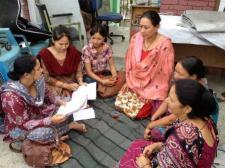We Launched a New Website! Surrogacy360

This blog was cross-posted from Our Bodies, Our Blog, the blog of Our Bodies, Ourselves.
As the journey to create a family takes more individuals and couples outside their own country in search of less-expensive surrogacy arrangements, it’s easy to find websites offering, for a fee, to broker such arrangements – and difficult to find information not tied to commercial interests.
Want to know what’s even harder? Finding informative analysis that’s completely transparent about the process and the risks facing all parties: intended parents, paid egg providers, surrogates (or gestational mothers), and children.
In an effort to fill this information gap, Our Bodies Ourselves teamed up with the Center for Genetics and Society to develop Surrogacy360.org, an educational website that provides factual information for people considering parenthood through international commercial surrogacy.
The site launched today. We hope you’ll take a look and send us your feedback.
Why Surrogacy360 – and why now? From women in Central America and South Asia – often marginalized socially, politically, and financially in their community – to educated young women in the United States recruited for genes/eggs perceived as superior, increasing numbers of women are becoming involved in contractual third-party reproduction. The market for their services is global, largely unregulated, and growing. This is leaving a dangerous vacuum, in which women on all sides are persuaded by financial and other incentives in the absence of safety data and redress.
At the other end of these arrangements, there are accounts of intended parents (those that hire gestational mothers) being duped by fertility clinics and recruiting agents. Surrogacy360 scrutinizes the health, legal, and ethical issues affecting everyone involved in the surrogacy relationship – and does so with every effort to respect the decisions of intended parents and include them in the conversation.
“Surrogacy360 speaks to people considering surrogacy who are looking for honest information about the realities and risks of third-party reproduction – not just the rose-colored stories featured in the marketing materials of fertility clinics and brokers,” said Marcy Darnovsky, executive director of the Center for Genetics and Society. “This website is for them, and for everyone concerned about the increasingly stratified market in human reproduction.”
The site answers basic questions about surrogacy, defines commonly used terms, and explains the legal landscape. There’s a resource section with the latest academic articles, reports, and news stories from around the world. It will be updated regularly, and you can sign up on the resource page to get the latest updates delivered to your in-box.
Surrogacy360 has no commercial interests or conflicts. Content is peer-authored and reviewed by known experts in the field, including individuals working on health care law, human biotechnology, and reproductive justice.
The need for this information has never been greater, said Sally Whelan, program director of the Our Bodies Ourselves Global Initiative. Many assisted reproductive technologies (ARTs) and the social arrangements they encourage are developing largely under the public radar.
“A revolution in human reproduction – the likes of which we have never seen – is now here,” said Whelan. “This new and exciting, far-reaching and innovative era presents unprecedented opportunities in family formation for people with infertility, the LGBTQ community, unmarried couples, and single individuals.”
“At the same time, for others – especially the women who provide their services in contractual third-party reproduction – it can pose unparalleled risks and create new global inequities within a largely unregulated, multi-billion dollar business,” she added.
Ayesha Chatterjee, program manager of the Our Bodies Ourselves Global Initiative, said Surrogacy360 is the only site addressing this dichotomy head-on.
“Given that ARTs and related practices like international commercial surrogacy are embedded in complex global dynamics, robust commercial enterprises, and entrenched social inequities,” said Chatterjee, “the key question becomes: How we can make use of the enormous benefits of ARTs and related arrangements while ensuring we do not do so at the risk of our own and others’ health and human rights? That question guides our work and the inclusiveness of the information we provide.”
The time to raise awareness is now – first, among consumers of ARTs and those who serve in contractual reproductive arrangements, followed by those in the sectors of public health, medicine, policy, education, human rights, and reproductive justice. Otherwise, around the world and across social and economic spectrums, women of reproductive age will be denied the information they must have for truly informed consent; intended parents will remain beholden to industry practices that are unsound; and children born of these arrangements will continue to face health and legal risks.
For more information, including press materials, see the Surrogacy360 press release.
Image via Our Bodies, Ourselves.



